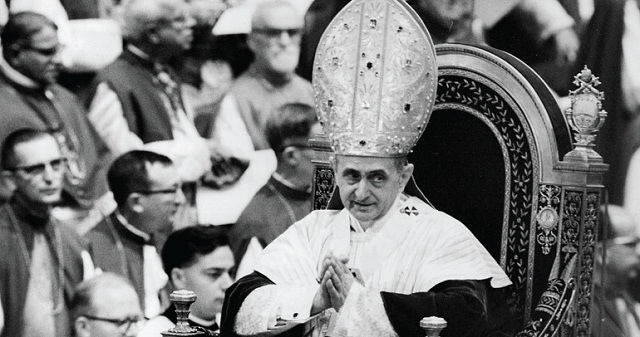
The Italian dominance of Vatican bureaucracy was tempered by the presence of more cardinals and bishops from the international church. To pursue the council’s accent on episcopal collegiality, national conferences of bishops were established, and Paul VI would preside over five synods of bishops from around the world. The pope’s highly personal encounters with other religious leaders dramatised a new openness of the Roman Catholic Church to other faiths.
But the most important of Paul’s achievements as he sought to extend the inspiration of the council to an increasingly troubled world was his campaign for world justice and peace. It was a campaign waged by personal witness as well as by written document. He broke all precedent by traveling to distant parts of the world to urge his message of human rights and human development.
He listened to the voices and saw the faces of the forgotten poor of the world in places like Calcutta and Manila and Medellin. And he urged his message on the most powerful leaders of the world, traveling to the great halls of the United Nations to issue his plea that there would be “never again war.” In his 1967 encyclical, “The Development of Peoples” (“Populorum Progressio”), he employed modern methods of social and economic analysis to underscore the injustice of a world where material resources were so unevenly distributed that they failed to serve the purpose of human development.
It was a message that disturbed many in the wealthy nations of the world, but its ring of truth still echoes 11 years later as the debate over a new world economic order continues. As the wealthier nations begin to take that debate more seriously, whether they realize it or not, they are at last responding to the message of Paul VI.
It was another encyclical, however, that proved to be the most controversial of Paul’s tenure. In 1968, he rejected the majority report of a special commission appointed to study the question of Catholic teaching on artificial contraception and, in the encyclical “Of Human Life” (“Humanae Vitae”), the pope condemned the use of any artificial contraceptive, a prohibition that provoked widespread dissent and disaffection among Catholics. The pope lived just long enough to celebrate the 10th anniversary of this famous document, and he reaffirmed its content on that occasion and expressed his appreciation for those who continued to uphold its teaching.
Some of those supporters point today to the phenomena of permissive abortion, homosexual campaigns and widespread promiscuity and insist that these are the inevitable consequences of an acceptance of artificial methods of contraception. In certain quarters, acceptance of the encyclical’s teaching on this particular point is even proposed as the litmus test of Catholic orthodoxy, something that the encyclical’s author, Paul VI, consistently refused to do. But 10 years is too short a time to assess the ultimate impact of “Humanae Vitae” on church and world. The encyclical’s condemnation of the “contraceptive mentality” does have prophetic echoes at a time of popular disregard of the deeply human linkage of sexuality and family life. Yet many thoughtful theologians and committed Christians continue to believe that the “contraceptive mentality” cannot be defined in simply biological terms. In other words, the Christian meaning of sexuality as both love-giving and life-giving is not contradicted because every act of conjugal love is not open to the possibility of conception, and family bonds and conjugal intimacy can even be supported at times by a more deliberate control of these possibilities.
Precisely because marital fidelity and family responsibilities are so often ignored and even derided among those who most influence our popular culture, it is regrettable that the controversy over methods of contraception has obscured the real advances made in “Humanae Vitae” in presenting a personalist understanding of Catholic sexual ethics. Whatever differences may exist on the question of contraceptive methods, a compelling vision of the relationship of sexuality, marriage and family can be developed from the encyclical, and it is a vision desperately needed by an eroticised culture that has come to accept the dehumanisation of sex.
It is also unfortunate that the argument over contraceptive methods has obscured the significant differences in the pastoral approach adopted by Paul VI toward the crisis of modern marriage. The abstract strictures of the past were replaced by an attitude of compassion, sympathy and greater respect for the individual conscience. These differences in style have encouraged the development of a more mature Catholic moral conscience and a clearer concept of the role of the church and the pope as a moral teacher. A new understanding of the relation of moral authority and personal conscience may, in time, prove to be the most significant legacy of “Humanae Vitae.”
In the final years of his life, Paul VI often spoke of the burdens of age and the imminence of death. Yet these shadows did not paralyse his spirit or cause him to shrink from the challenges of a dangerous world. He condemned the increasing violence of the age and sought repeatedly to strike a responsive chord in the moral conscience of his contemporaries. He was saddened by the contempt for human life that seems to characterize our time, and his sadness was sharpened because he saw the possibilities of human life transfigured by the glory of the risen Jesus.
 The Independent Uganda: You get the Truth we Pay the Price
The Independent Uganda: You get the Truth we Pay the Price


